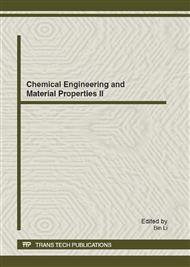p.221
p.225
p.229
p.234
p.238
p.242
p.246
p.251
p.255
Nonthermal Plasma Hybrid Technology for VOCs Decomposition
Abstract:
Because of its wide pollution, large flow and low concentration, the waste gas containing volatile organic compound (VOCs) will be controlled more strictly on its emission, and new technologies for its treatment must be developed continuously. As an emerging technology for environmental protection, non-thermal plasma (NTP) has been subjected to extensive researches over the past 20 years. In the field of air pollution control, the NTP technology has been used for the abatement of various types of hazardous air pollutants due to its unique properties including the moderate operation conditions (normal temperature and atmospheric pressure), moderate capital cost, compact system, easy operations and short residence times, compared to the conventional technologies. Especially, combined plasma technology has multi-function effects, better pollutant degradation efficiency, better energy utilization efficiency and higher pollutant selectivity than single plasma technology. The research progresses in treatment of waste gas containing VOCs and the patents application by plasma technology combined with adsorbent, catalyst and ferroelectric are summarized and analyzed. From the review, we can come to a conclusion the synergistic technology result in greater enhancement of VOCs decomposition and energy efficiency. The development direction of combined plasma technology is prospected.
Info:
Periodical:
Pages:
238-241
Citation:
Online since:
July 2012
Authors:
Keywords:
Price:
Сopyright:
© 2012 Trans Tech Publications Ltd. All Rights Reserved
Share:
Citation:


